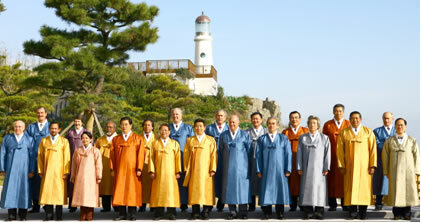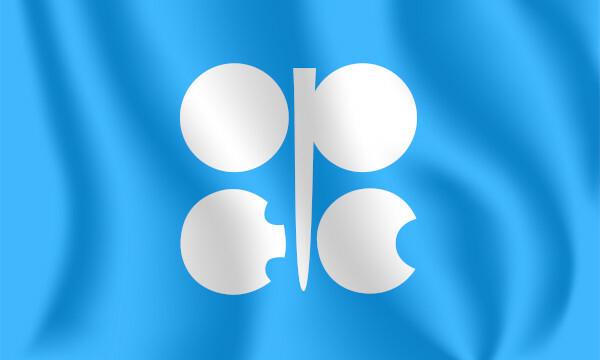O Southern Common Market, known as Mercosur, it is a south american economic bloc formed by Brazil, Argentina, Uruguay, Paraguay and other associated and observer countries. It was officially created in 1991, in an attempt to increase the offer of jobs and income, improve productivity and intensify economic relations between countries. That economic block regional is very similar to others existing around the world, but has peculiarities of the South American region.
Read too: USMCA - North American Free Trade Agreement
Creation of Mercosur
The Southern Common Market it workedof negotiations that emerged in the 1980s. At the time, in 1985, José Sarney (then president of Brazil) and Raúl Alfonsin (then president of Argentina) were talking about a integration project involving Brazil and Argentina. The conversations matured and, in the early 1990s, in the middle of the New world order and predominance of capitalism, two other countries were invited to participate in this integration: Uruguay and Paraguay.

In day March 26, 1991, in the city of Asuncion, capital of Paraguay, the Asuncion Treaty, document that made the creation of Mercosur official, which has its official headquarters located in Montevideo, Uruguay. As of that date, the economic bloc involving the four countries was made official: Brazil, Argentina, Uruguay and Paraguay
Do not stop now... There's more after the advertising ;)
Mercosur Objectives
The main objective of Mercosur, at the beginning of its creation, was to establish a free trade zone between the countries involved. This zone would guarantee the commercial circulation of products without the need for bureaucratic procedures in relation to an export.
This goal was achieved in 1994. From there, another objective was conceived: the creation of a Common External Tariff (TEC), in 1995. This tariff is used for imported products entering the countries involved. All four (Brazil, Argentina, Uruguay and Paraguay) must charge a common and single tax for these products that come from abroad (imported), thus avoiding that one of the countries gives preference to a type of product and that this country is the gateway for some goods.

However, some products do not fall under the TEC, such as some medicines and hygiene products (diapers for babies and sanitary napkins), which reveals the imperfect customs union (free trade zone that adopted a TEC) of the Mercosur. This practice is supported by the List of Exceptions to the Common External Tariff (LeTec).
In short, these are some of Mercosur's main objectives:
- Free trade zone, with release of goods.
- Common External Tariff (TEC), a single tax for products entering member countries;
- Customs Union, which completes the TEC.
See too: Difference between export and import
Who are Mercosur's participants?
The countries participating in Mercosur must be distinguished into three groups:
- member countries: are the countries that founded Mercosur or those that joined after the creation of the bloc. They are: Brazil, Argentina, Paraguay, Uruguay and Venezuela (suspended since 2016).
- Associated countries: countries that signed free trade agreements with Mercosur in order to stimulate their economies and trade exchanges, but do not have the same advantages as members, such as the TEC. This group includes Bolivia, Chile, Colombia, Ecuador, Guyana, Peru and Suriname.
- Observer countries: countries that only observe the meetings, participate in events to see the progress of the negotiations, but do not have the right to veto or opine on any clause. Mexico and New Zealand are those countries.
In the table below we can see the dates of entry into the block and how they entered, in addition to the current status.
PARENTS |
ENTRY FORM and YEAR |
CURRENT SITUATION |
Brazil |
Country signatory to the Treaty of Asunción, in 1991. |
Biggest savings on the block. |
Argentina |
Country signatory to the Treaty of Asunción, in 1991. |
Second largest economy in the block. |
Paraguay |
Country signatory to the Treaty of Asunción, in 1991. |
Large exports to Brazil and Argentina. |
Uruguay |
Country signatory to the Treaty of Asunción, in 1991. |
Large exports to Brazil and Argentina. |
Venezuela |
Meeting held in Brasilia, in 2012. |
Suspended since 2016 for not complying with the democratic clause. |
Chile |
Free trade agreement signed in 1996. |
Associated country. |
Bolivia |
Free trade agreement signed in 1996. |
Associated country. |
Ecuador |
Signing of the free trade agreement, in 2004. |
Associated country. |
Colombia |
Signing of the free trade agreement, in 2004. |
Associated country. |
Guyana |
Signing of the free trade agreement, in 2013. |
Associated country. |
Peru |
Signing of the free trade agreement, in 2003. |
Associated country. |
Suriname |
Signing of the free trade agreement, in 2013. |
Associated country. |
Mexico |
It does not participate in the block, but has observed it since 2006. |
Observer country. |
New Zealand |
It does not participate in the block, but has observed it since 2010. |
Observer country. |
Main features of Mercosur
In addition to the creation of a free trade zone, the TEC and a gradual integration among member countries, Mercosur has free movement of people and services. This means that professionals from various fields (doctors, teachers, journalists, among others) can exercise their functions in any of these countries (Brazil, Argentina, Paraguay, Uruguay), with a validated diploma, in addition to the entry allowed only with the identity document of the country of origin.
Another feature of Mercosur is the increased negotiations between founding countries. In 1991, trade was worth 4.5 billion dollars. By 2018, that number had risen nearly 10-fold, totaling 44 billion. If viewed as a whole, Mercosur would be the fifth largest economy in the world, with a Gross Domestic Product (GDP) of nearly 2.8 trillion dollars. In addition, this block is a privileged space for investments, business associations, tourism, trade, among other economic scenarios.
In recent years, the number of Argentine tourists in Brazil has grown significantly and the opposite has also occurred: Brazilian tourists in Argentina. In addition, several multinationals opened branches in one member country to export to others. However, if a crisis occurs in one of the countries, all are affected, as in 1999, with the devaluation of the Brazilian currency that year.
For a country to become an official member, some clauses that are in the Treaty of Asunción must be respected. One of them is the respect to democracy (democratic clause). If a country goes through a dictatorship or disrespects the rites of full defense in its legal proceedings, the bloc is suspended until order is restored.
In 2012, the Paraguay opened process of impeachment against then president Fernando Lugo in less than 24 hours, not guaranteeing the politician the right to defend himself. the country was suspended from the block until new elections were held, which occurred in 2013.
In 2016, the crisis in Venezuela reached alarming levels, with an authoritarian government and little freedom of expression. On the face of it, this country was suspended from the block, a fact that remains today.
Also access: Venezuelan immigration to Brazil - causes and consequences
solved exercises
Question 1 - (IFMG/2016) Southern Common Market (Mercosur) is an economic block created within the context of international trade opening, structured in the midst of the globalization process.
Source: Available at http://www.mercosul.gov.br/
Considering the main characteristics of Mercosur, mark what is correct.
a) The agreements of this bloc promote great circulation of people and goods, establishing a single currency to facilitate imports and exports between them.
b) Made up of Brazil, Uruguay, Paraguay, Argentina, Peru, Chile and Venezuela, Mercosur is one of the most important economic blocs in the world.
c) It is a Free Trade Area that was established from the rapid economic growth of the countries of South Asia.
d) The main objective of the bloc is the integration of countries through the free circulation of goods, services and productive factors, reducing taxes and facilitating trade.
Resolution:
Alternative D. Mercosur does not have a single currency (letter a); it is not formed by Chile and Peru, as these are only associated countries (letter b); and is located in South America, not Asia (letter c).
__________________
Question 2 - About the Common Market of the South (Mercosur), we can say that:
a) is the main economic bloc in the world.
b) corresponds to a monetary union between Brazil, Argentina, Paraguay and Uruguay.
c) establishes political rules for Latin American governments.
d) is an economic bloc of great relevance to South America.
e) includes all countries on the American continent.
Resolution:
Alternative D. Mercosur involves the main economies of South America, accounting for approximately 76% of the GDP of this continental area in 2017.
By Attila Matthias
Geography teacher
“The advent of Mercosur greatly expanded Brazil's commercial and financial relations with its neighbors in the south and southwest. Until the 1980s, these South American countries were not important trading partners, especially in relation to investments, however, in the 1990s, Argentina became notably among the most important for foreign trade Brazilian. A growing number of companies from Brazil have opened branches in Argentina (and vice versa), and many industries foreign companies settled in one of these countries in order to produce for the entire consumer market of the Mercosur”.
VESENTINI, José William. Geography: the world in transition. São Paulo: Editora Ática, 2012. p.333.
Regarding the countries that make up Mercosur and their trade relations, check the alternative incorrect:
a) Mercosur was created with the objective of expanding trade between member countries through the reduction or elimination of customs tariffs.
b) The members associated with Mercosur are: Chile, Bolivia, Ecuador, Peru, Colombia, Guyana and Suriname.
c) In 2004, Mexico joined the bloc as an observer member.
d) Mercosur, even today, is not considered an economic bloc constituted by a Customs Union.
Argentina, Brazil, Paraguay and Uruguay form the Mercosur (Common Market of the South), the body that establishes the rules and procedures for economic integration between the four countries. About this economic block, it is correct to state that:
a) it integrates countries with very different populations, economic dynamics and income levels.
b) establishes “open borders” for the free movement of people, products and capital.
c) allows the free circulation of industrial goods without customs restrictions and barriers.
d) restricts migratory flows due to historical rivalries within the bloc.


